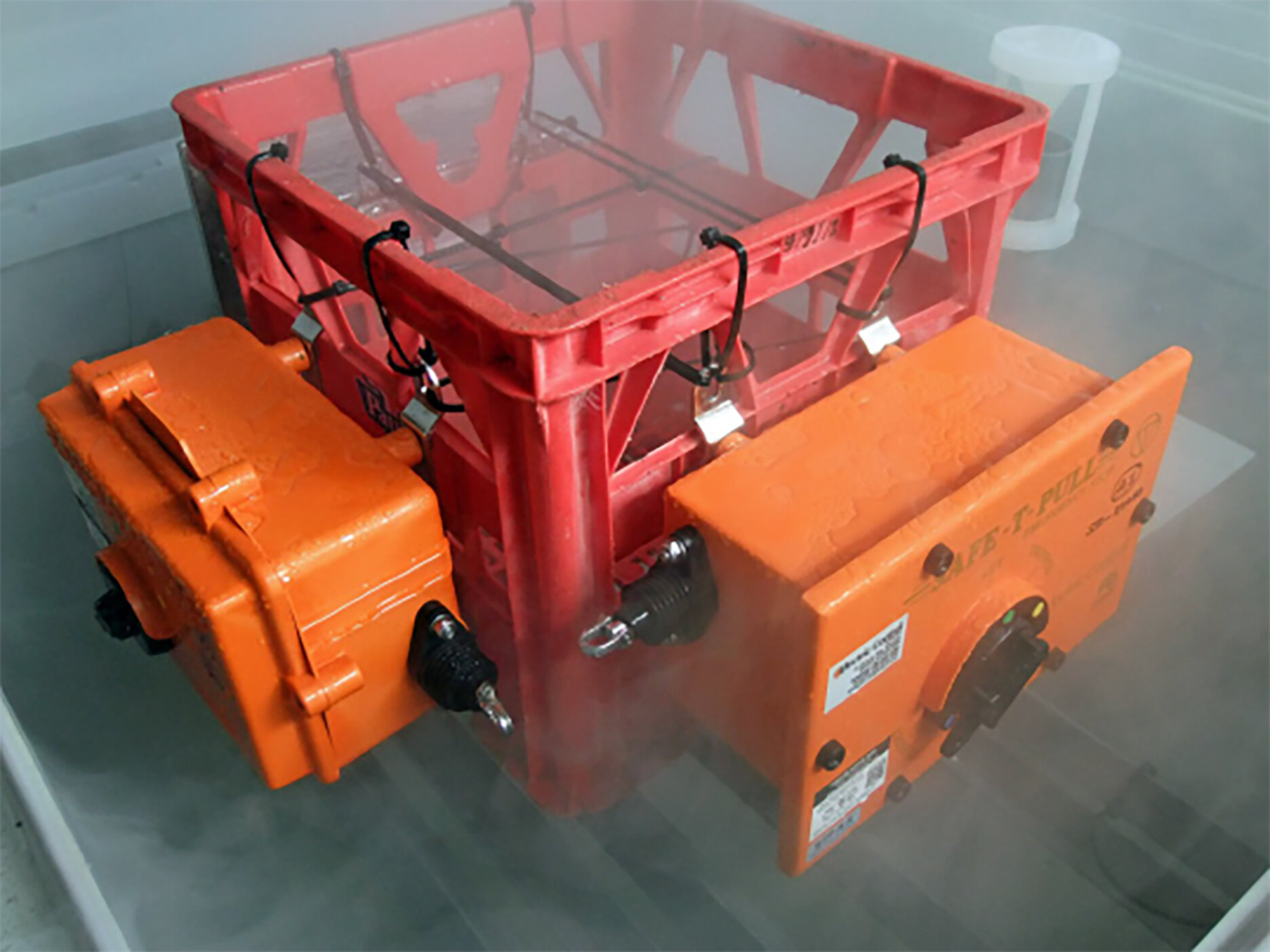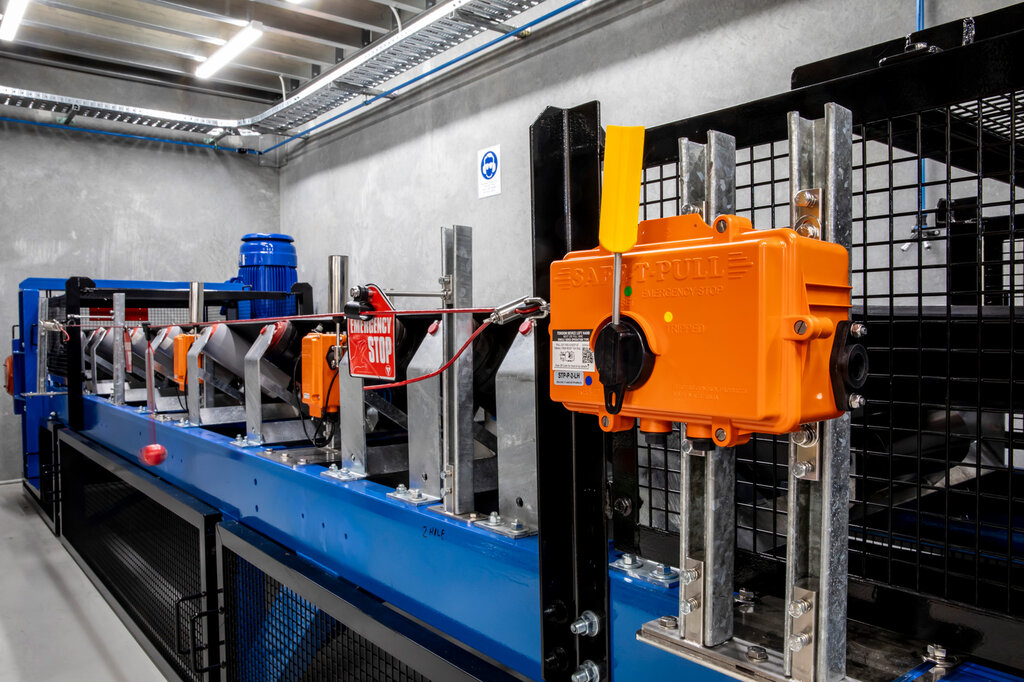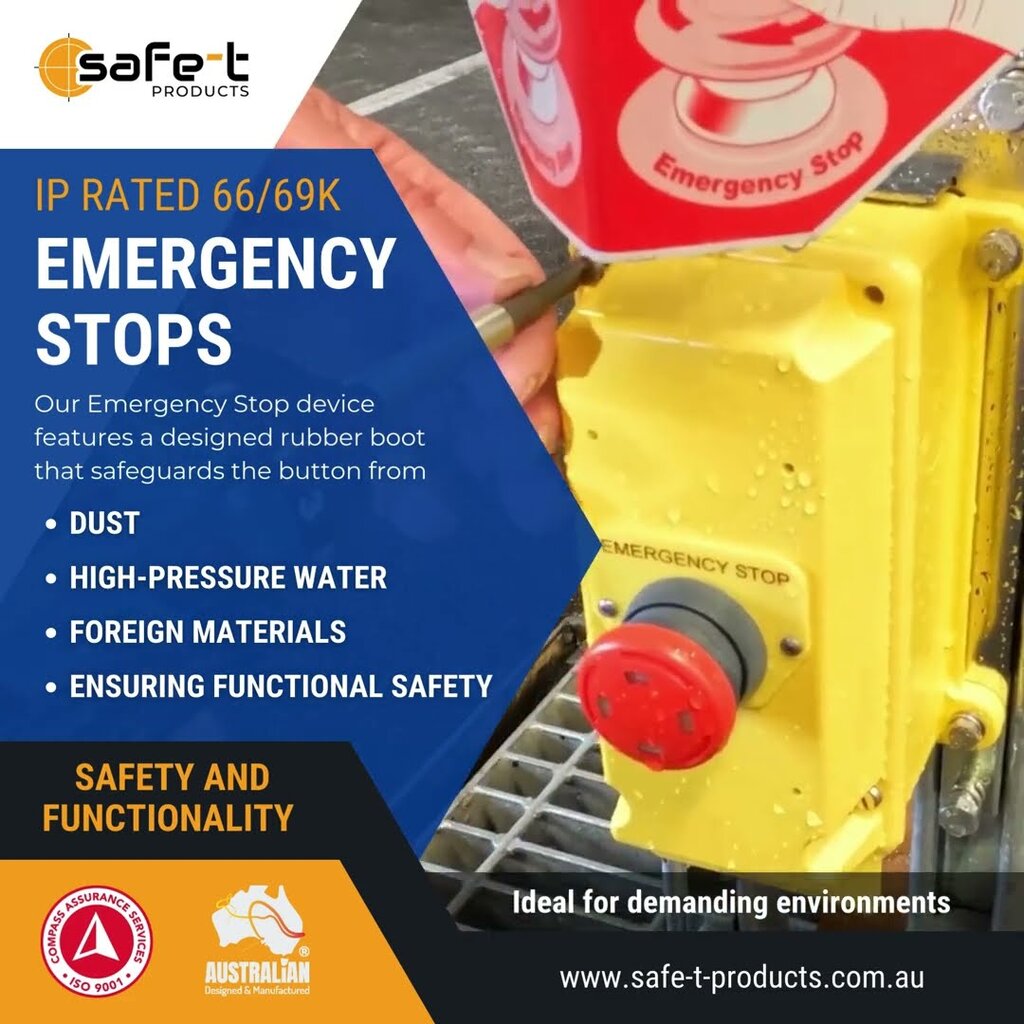Company Insight
Sponsored by Safe-T-Products
The roadmap to certification
A deep dive into Safe-T-Products' SIL strategy.
Caption:
Safety Integrity Levels (SIL) are a critical measure of reliability for systems that demand absolute safety. But achieving a SIL rating isn’t just about meeting standards; it’s about ensuring trust and dependability through rigorous testing.
Safe-T-Products is committed to this standard, pursuing comprehensive, independent testing to provide confidence in our devices' safety and performance.
Since 1991, Safe-T-Products has been specialising in emergency stop and protective stop control devices - delivering solutions engineered to endure the harsh realities of mining environments. Operating out of Perth, Safe-T-Products collaborates with industry leaders such as BHP, Rio Tinto, and FMG to tackle safety challenges head-on. By focusing on reliability and innovation, the company has become a trusted partner for operations both in Australia and globally. Safe-T-Products’ mission is clear: to create dependable safety systems that industries can count on.
In 2015, Safe-T-Products began methodically advancing toward full SIL certification through independent, real-world testing. By partnering with authoritative bodies and creating bespoke testing equipment, the company is setting a new benchmark for safety assurance in the mining and process industries.
What is SIL?
SIL ratings assess the performance of safety systems used across various industries. To achieve certification, devices must meet specific failure rate criteria verified through extensive testing, including Failure Modes and Effects Analysis (FMEA). While many devices claim compliance without undergoing real-world testing, Safe-T-Products has chosen to pursue full certification through independent testing authorities.
Why? Because a thorough and impartial testing process ensures reliable, verifiable results. This commitment means clients that rely on our devices can trust them to perform under even the most demanding conditions.

Our Safe-T-Pull devices went under salt spray testing for 96 hours at +35 degrees C in a solution of 5%NaCl.
The benefits of independent testing
Here’s what sets independent testing apart:
- Impartial verification: Partnering with third-party labs ensures unbiased assessments of device safety and performance.
- Recognised certification: Achieving certification from authoritative bodies builds trust and credibility.
- Enhanced safety assurance: Devices tested to meet SIL standards are proven to be suitable for safety-critical applications across diverse industries.
- Real-world validation: Certification through hands-on testing provides concrete evidence of reliability.
- Industry confidence: Rigorous testing reassures industries with strict safety requirements, like manufacturing and process control, that our devices meet their needs.
Safe-T-Products’ path to SIL certification
Safe-T-Products began its SIL certification journey in 2015, focusing on a structured, thorough approach to testing. A pivotal moment came when TUV Rheinland Japan presented an advanced seminar on ISO 13849, setting the foundation for a detailed roadmap toward compliance.
Key milestones achieved so far
Electrical component testing
Collaborating with our suppliers, we designed a specialised microswitch that meets IEC 60947-5-1 standards. TUV Hungary tested and certified its durability, a crucial step in our certification process.
Developing the automation tester (STP-AMDT)
To conduct mechanical durability tests, we created the STP-AMDT, a bespoke device simulating real-life field operations. After years of refinement, it was completed in 2023, enabling accurate testing of pull cord devices under rigorous conditions.
Mechanical cycle durability testing
The STP-AMDT was used to test pull cord devices housed in plastic, aluminum, and stainless-steel cord. Each underwent 6,050 full-cycle operations to assess durability, with the process taking three weeks of continuous testing.
Environmental durability testing
Post-mechanical testing, devices faced extreme conditions, including:
- High temperature (+70°C for 96 hours)
- Low temperature (-40°C for 96 hours)
- Humidity variations (+25°C with changing moisture levels for 96 hours)
- Corrosion resistance (+35°C in a 5% salt solution for 96 hours)
- These tests simulate the challenges devices might face in real-world environments.
Credit:
Check out our SIL ratings journey in more detail on our website.
What’s next?
Vibration durability testing (in progress)
This phase ensures devices withstand shocks, vibrations, while maintaining safe Electrical Functionality. Key tests include:
- Shock and vibration resistance
- Electrical impulse testing at 2,500V to check for electrical functionalaity.
- Continued mechanical testing to confirm operational reliability
Failure modes and effects analysis (FMEA)
To cap off our certification process, we’ve partnered with Exida for an in-depth evaluation of selected devices. Once certified, our products will feature on Exida’s publicly accessible safety automation equipment list.
The certification process is expected to take three to six months, provided all documentation and testing results meet the stringent standards required. Certification will be valid for three years, after which a renewal audit will maintain compliance.

Caption:
Why it matters
Our goal is to provide industries with solutions they can depend on, backed by proven, real-world performance. With every test and milestone in this rigorous process, we’re not just certifying our devices—we’re reinforcing our promise of dependability in safety-critical applications.
Contact information
Safe-T-Products
18-19 Tambrey Way,
Malaga, Perth, Western Australia 6090
Email: admin@safe-t-products.com.au
Web: www.safe-t-products.com.au

